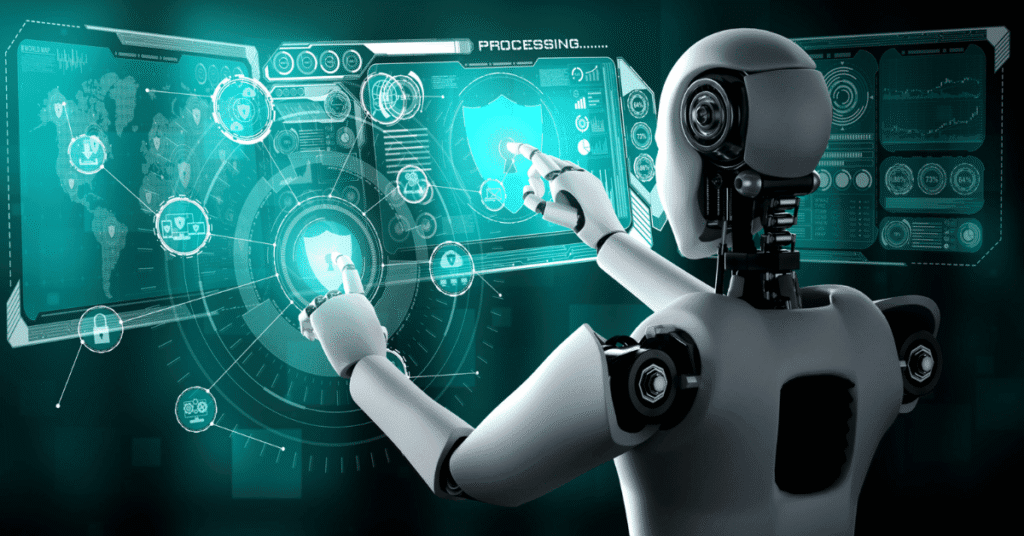Introduction
Breaking AI technology into the age of applications for humanity should have acquired almost all the training data by October 2023. Now it characterizes the present and future world for the industries, from smart help in Siri or Alexa down to heavy algorithms that drive autonomous cars through modern medical diagnostics.
Therefore, AI technology is set, along with sustenance into such an environment that has to be prominently placed where one would build a theory concerning the validation of strong independence from information, automation, and predictive analysis; a technology that outreached strength in the most commonplace and problematic areas of human interaction, rather than mere automation purposes.
AI technology was conceptualized from the gamut of working principles, applications, merits, challenges, and the most important impact it has on their world.
Scenarios of AI Technologies
The main purpose of machine learning has always been to enable computer systems to do the task in those domains that human usually reserve for their intelligence of learning complex tasks, reasoning, and understanding language. Let us consider the practical capability of AI involving learning, reasoning, perception, language understanding, etc. On a layman’s level, AI lets systems think or act in what might appear as intelligent ways to some people.
The classification of AI technologies is somewhat in the following categories:
1. Narrow AI (weak AI): Primarily narrowed specialization to an industry-specific area, such as facial recognition.
2. General AI (strong AI): Can perform in any intellectual activity performed by a human being.
3. Superintelligent AI: A hypothetical form of AI that involves operations superior to most humans in terms of brain functions.
Approaches to AI Technology
A host of interacting components enforce the operations of AI technology.
1. Machine Learning (ML)
Explanation of ML exaggerates every position of a modern AI system. As far as ML is concerned, it carries the ability to let a machine learn from experiences, allowing implicit programming and data in its instructions.
2. Neural Networks:
These systems emulate human neural network architecture for the recognition of patterns and much more, parsing complex data.
3. Natural Language Processing (NLP):
It is one step further in trying to make machines understand and behave according to human languages, engaged with activities, and hence chatbots, translators, and voice assistants are introduced to human society.
4. Computer Vision:
Computer Vision allows the AI system to comprehend visual data: be it the best possible location of a particular object or some other, offering the common man objectionable images from the web, or interpreting the results of some medical scans, just for a start.
5. Robotics:
Such robots will assist in tasks such as assembling other robots, performing surgery, or aiding the customer.
Key Applications of AI Technology
Then come some applications of AI in each field, and will continue:
1. Health Care
AI influencing diagnostics definitely brings an entirely new approach to preventive and primary patient care. The system outdoes conventional diagnostic methods because it is basically built to detect diseases.
2. Finance
The AI algorithm plays roles in fraud detection, AI-driven trading, and total customization for individual banking solutions. Chatbots provide customer support 24×7.
3. Manufacturing
AI applications in smart factories include production planning optimization, predictive maintenance for the future, and predictive analytics for downtime reduction.
4. Transportation
Uses of AI technology have developed into every field. AI technology is now implemented into ‘intelligent’ traffic systems to make travel more secure, efficient, and congestion-free, as well as to help improve the logistics chain.
5. Education
AI tools make education more personalized in the way curricula adjust themselves to fit any student and by maintaining real-time information on the student’s progress.
6. E-Commerce and Retail
Proper stock management, suggestion machines, and individual advertising all increase customer satisfaction.
Interests Towards AI Technology
The following are the various advantages relative to the implementation of AI technology:
Increased Efficiency
AI processes will complete tasks of analyzing vast volumes of data at fantastic speeds as compared to most human beings and make fewer errors, thus efficiently completing tasks.
Cost Savings
The deliberate automation of regular, mundane tasks decreases operational costs while opening up more human resources for value addition.
Improved Decision Making
Agents can then take increasingly informed decisions thanks to predictive modeling and real-time analytics.
Scalability
Helpful across several areas of business, like any AI system, being high-powered, it can keep working forever.
Enhanced Customer Experience
Customized customer service by chatbots is appealing to people and thus covers a very big portion of customer-friendly maintenance.
Challenges and Ethical Considerations
The funny drawbacks of the systems of AI technology include:
Job Displacement
Estimates are that automation will shed millions of jobs, mainly in manufacturing, customer services, and transportation.
Bias & Discrimination
Bias may have been brought into the system through AI in disguise from training data, which may lead to a system to renders unfair and discriminatory analysis reports.
Data Privacy
Unequivocally, broader data collection by AI systems threatens the very existence of privacy and confidentiality, igniting fears of so much security compliance and misuse of data collected.
Threat of Abuse
Some of the primary concerns in one’s eyes are AI applications in malicious practices, with instances of cyberattacks, misinformation, and autonomous weaponry.
Overly Regulating Ridges
There is too much happening even for governments to regulate it. The rapid pace of developments in modern AI-induced issues has left its ethics and legal concerns lagging far behind in a world where its sister concept of global regulation is still too far in the offing.
The future promises excellent advancements for AI, although it’s a little hazy. Future steps will take place under a paradigm of quantum computing and explainable, general-intelligence technologies.
Some Trends Emerging
- Creativity and AI: The AI generation of art, music, and literature opens a new field in creative possibilities for creativity that dares to compete for primacy.
- AI Climate Solutions: AI models climate for optimization of energy use.
- AI Governance: A few governments and organizations are attempting to lay down laws of ethical governance for AI.
Hence, when contemplating the future growth of AI technologies, it would be better to think about their ethical usage and the establishment of transparent and fair AI systems than the construction of more intelligent devices.
Empowering People with AI
For fresh graduates—students, professionals, and entrepreneurs—something new and, therefore, the availability of new skill sets, along with some basic knowledge:
Learn Anything About AI:
Machine learning, data science, algorithms—get the hang of it.
Tech Competence:
Programming languages like Python and tools like TensorFlow and Scikit-learn.
Data Literacy:
Learn to read, interpret, and use data.
Ethical Consideration:
Returns to questioning the social implications of AI for fairness, accountability, and transparency.
Stay Agile:
AI never stops but changes; keep up with the tools, trends, and best practices.
Conclusion:
Thus, this is how AI expands its footprint in the 21st century—from entering business to touching personal relationships, health diagnosis, mobility, etc. What now enables AI to deliver such great innovations must be critically examined and regulated. Ethical contestants are bound to emerge in this evolutionary progress for the public benefit to remain protected.
Charging all human communities, especially industries and governments, to see to it that AI does greater good while respecting natural measures for the human community.
FAQ: AI Technology
Q1: AI and Machine Learning: What’s the Difference?
AI is the broadest term possible for virtually any machine that can be said to act intelligently; inside AI, machine learning is just one branch that cares about making algorithms that mostly learn from data.
AI is safe for application; governance is an issue that exists. There are worries with respect to bias, privacy of the individual, and how to govern them.
Q2: Will AI take away jobs from humans?
Yes, undoubtedly, jobs will be taken away from people through AI, whereas new openings will be created due to the new jobs emerging in the areas of tech, data science, and AI management.
Q3: In What Ways Does AI Impact Daily Life?
Digital voice assistants, recommendation engines, smart home devices, and fraud detection technologies on the web.
Q4: Who is going to get a lot from AI technology?
No surprises if healthcare gets maximum advantage out of AI technology, followed by finance, retail, manufacturing, and transport.



